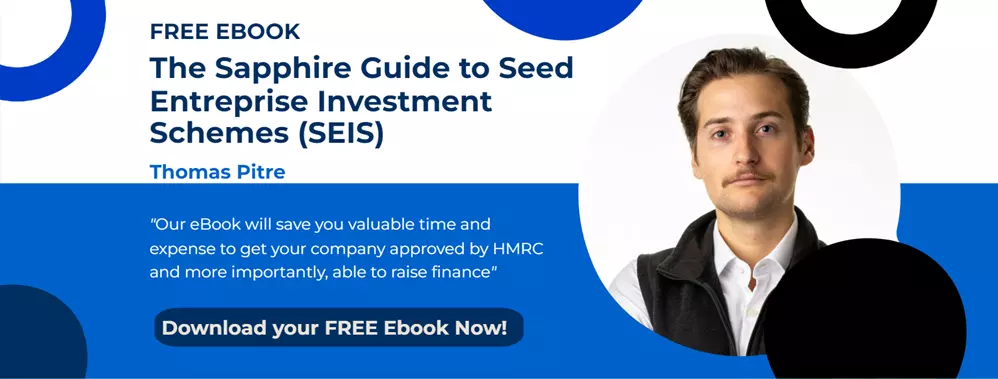 The Summer Finance Bill announced some pretty major changes to both the Enterprise Investment and the Seed Enterprise Investment Schemes, which are expected to be effected next month, subject to Royal Assent. These changes further define the schemes, and arguably make them more restrictive in order to prevent artificial structures as well as to abide by the most recent EU regulation pertaining to SME financing. Although most of the changes affect the company and whether it qualifies for the schemes, there are a number of changes that investors need to be aware of as it may impact their decision making process. In summary, the main changes are as follows:
The Summer Finance Bill announced some pretty major changes to both the Enterprise Investment and the Seed Enterprise Investment Schemes, which are expected to be effected next month, subject to Royal Assent. These changes further define the schemes, and arguably make them more restrictive in order to prevent artificial structures as well as to abide by the most recent EU regulation pertaining to SME financing. Although most of the changes affect the company and whether it qualifies for the schemes, there are a number of changes that investors need to be aware of as it may impact their decision making process. In summary, the main changes are as follows:
Changes impacting investors
1 - The requirement for the company to have spent 70% of SEIS monies raised before issuing EIS shares is now to be lifted; however, the SEIS and EIS shares still need to be issued on different dates. As such, investors will now have the ability to choose between acquiring shares from either of the schemes within the same time period.
2 - No EIS relief will be taken away if there is a company buy-back/redemption of shares within the three year holding period. This change is to be retroactive and is to apply from 6 April 2014.
3 - For pre-existing investors to attain subsequent EIS shares, they would only be allowed to do so if the initial shares were EIS or the subscriber shares were acquired prior to the commencement of trade. This is referred to as the "independent investor rule".
4 - Income tax relief will only be granted on new EIS shares that were issued before the 6 April 2025. (Whether this indicates the potential phase out of the program is not yet known, but Treasury has clarified that it reserves to hold discretion over changing the date at any time.)
Changes impacting companies
1 - Farming outside of the UK no longer qualifies for the Enterprise Investment Scheme relief.
2 - The maximum amount that a company can raise under EIS is £5 million; the new changes will stipulate that any investments of 51% owned subsidiaries, including investments made before the company actually became a subsidiary are to be included in the £5 million cap. Additionally, any trade that was transferred to the issuing company or subsidiary will also need to be included in the amount.
3 - If a share issue takes the total investment received to over £12 million (£20 million for "knowledge intensive companies"1), then the entire share issue will not be eligible for EIS relief. This includes monies raised for 51% subsidiaries and trade transfers as well.
4 - Enterprise Investment Scheme monies are now being designated to be used for "internal growth" purposes. As such, they can no longer be used for acquisitions of (a) another company that would become a 51% subsidiary of the issuing company, (b) a trade, (c) certain intangible assets and (d) goodwill.
5 - There will be an age requirement to qualify for Enterprise Investment Scheme status which has been set to seven years (10 years for "knowledge intensive"1 companies).
6- The employee number limit to qualify for EIS which had previously been set at less than 250 employees in the company (or group) will be increased for "knowledge intensive"1 companies to 500 employees or less at the time of share issue.
7 - Post SEIS/EIS investment, "knowledge intensive"1 companies must have the number of full time skilled employees comprise at least 20% of the total company's headcount within three years.
It appears that government is determined to see the schemes carry on for the foreseeable future as they have become an important part of UK economic policy as a successful way to assist entrepreneurs obtain risk finance. The above changes arose mainly as a result of EU regulations, and in particular "Article 21- Aid for Access to Finance for SMEs".
As these changes are to be put into effect in November, anyone applying for the schemes' advance assurance in the meanwhile must be aware of these new regulations in order to prevent breaching them and ensuring that they address the points in their advance assurance application. For example, HMRC is keen to encourage applicants to provide the total finance they intend to raise after the SEIS/EIS round in order to ensure that the company will be compliant with the above new investment requirements. If you are planning on applying to obtain advance assurance for your company, please give us a call, we can assist with the process to ensure you obtain the assurance in an efficient and effective manner. Speak to us, we are happy to help.
1"Knowledge intensive" companies are defined as R&D heavy companies (i.e. spending at least 15% of total costs on R&D or innovation) that either meet the innovation condition or the skilled employee conditions (ie whether they have created IP that is to be exploited within 10 years or whether 20% of the headcount is comprised of skilled full time employees that are directly engaged in R&D activities.)
Note that Sapphire Capital Partners is not promoting any product for investment or providing any form of investment advice.



